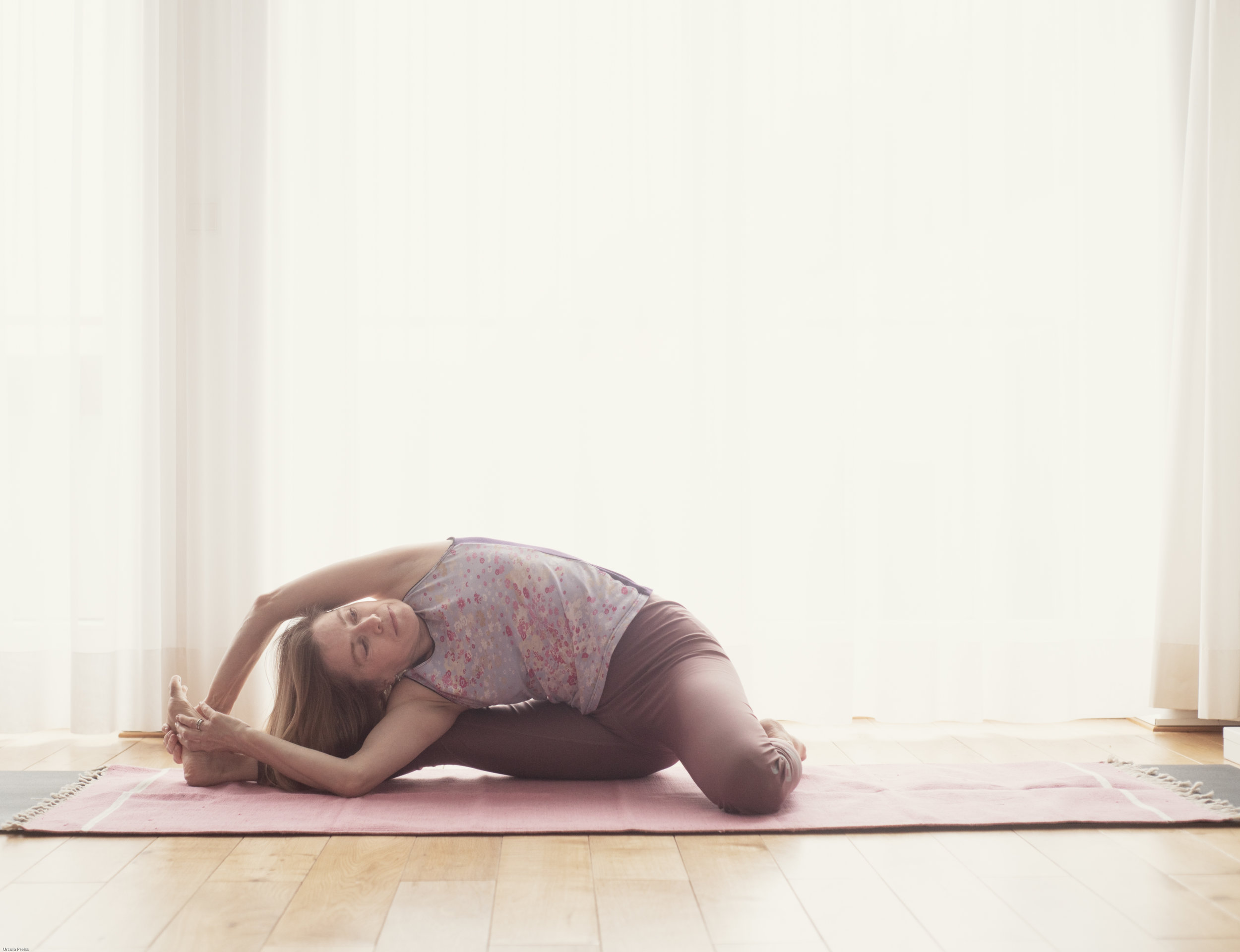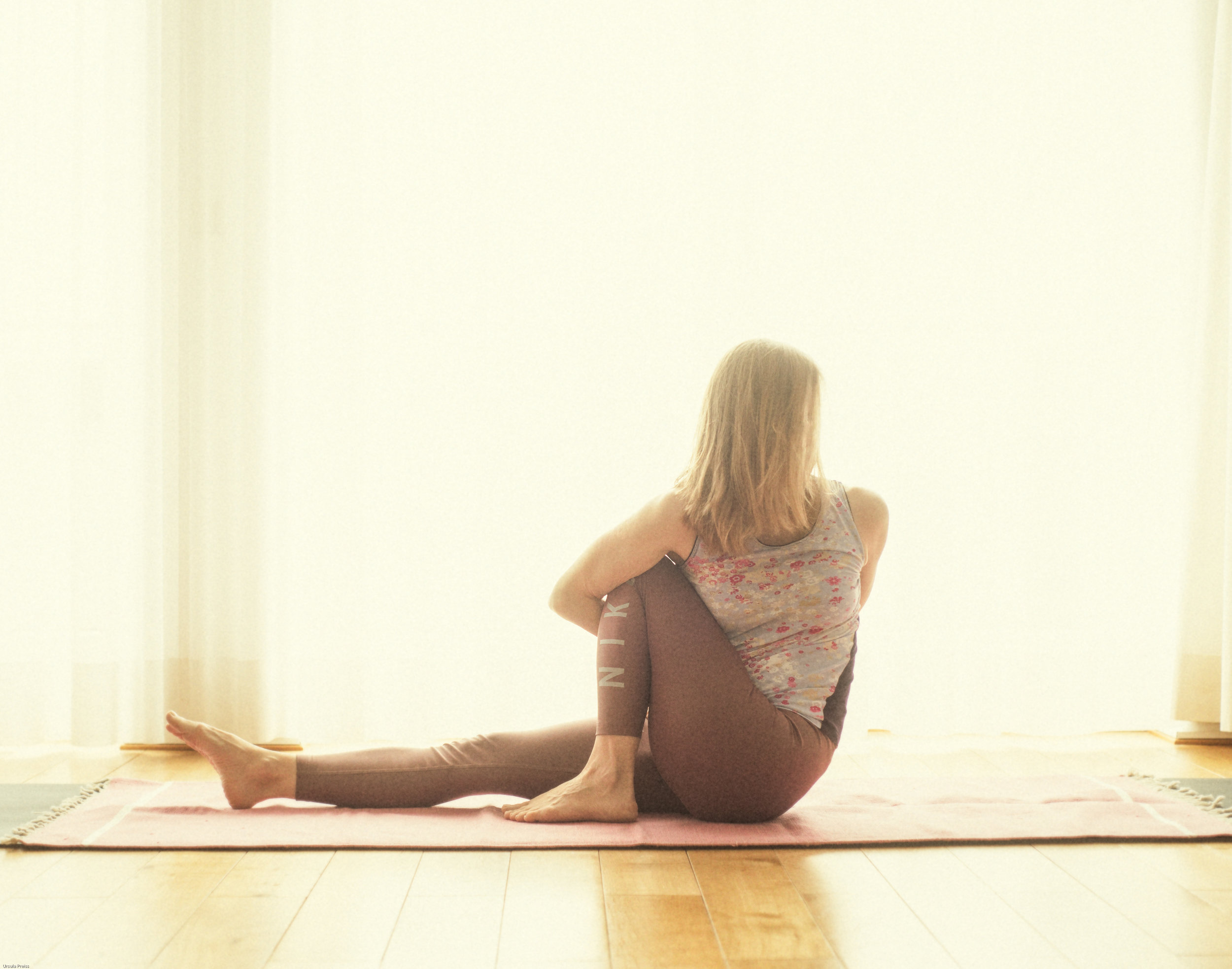Back bending - neck stretch
Neck stretch, August 2022
The stretch looks superficial, yet I reached my limit. With time the hands might be able to slid down on the wall. This will intensify the stretch. The chest shall keep touching the wall.
Even more important is the curve in the lower back. Ugi repeated it again and again. Stretch your butt out. This is exactly the opposite of what I did by now. I tried to lengthen the spine in order to stretch the front side of the body. But the front side will stretch anyway.
Ugi is a cotortionist, who taught classes on Omstars. I trust her more than any other person. She must know it as she lives from her flexibility. She must take care that she won’t injure herself.
For a week now I tried this new approach to back bending. I first stuck my butt out and then I bent backwards with the upper body and the head of course as well.
It feels better and more natural to emphasise the natural curve of the spine.
This difference in moving into a back bending asana is like a a revolution. It alters everything. It allows me to get deeper into a back bending asana.
My goal could be to touch the wall with my butt. It will take some time………
The spine
The spine has 24 vertebras. They are connected via joints. This is why we can move our body in different directions. The perfect construction of the spine allows this flexibility.
We can do inversions. When the head is below the heart we have an inversion pose. It feels as if one can create room.
We can bend backwards.
The spine allows to move the upper body sidewards.
Twists are possible.
We can also round the body and bow forward.
This is a lot. Most people don’t move the body in these different directions, even though the body allows to do it. One day the spine is stiff and not so many movements are possible anymore. Having limitations often comes with age, when people didn’t work on staying flexible. Yet this needn’t be the case. We can keep the spine flexible.
I always aim for a balanced practice. I don’t think that primary series of Ashtanga yoga is a balanced practice. 80% of the asanas are forward bending asanas. They aim at making the hip joint more flexible, but mainly in one direction: forward. The spine remains in it’s natural state. I have the feeling that all these forward bending asanas shall prepare the body for the leg behind head poses. I like these advanced asanas, but are they really important? I don’t think so. It’s more important to move the spine in different directions.
I often add a side stretch these days. I hold the twists longer than 5 breaths. I alter primary with second series.
Today I had to motivate myself to start practicing. As soon as I had done the first sun salutations I was concentrated and enjoyed the practice. The three sun salutations B were easier already than yesterday. Nevertheless my heart rate went up and I sweated a lot. After 90 minutes I was exhausted.
I did urdhva dhanurasana. After all these forward bending asanas it was a weak pose. It makes more sense to work on back bending asanas when I practice second series.
Getting stronger, becoming more flexible again is a journey that requires patience. There is no shortcut. It takes time.





